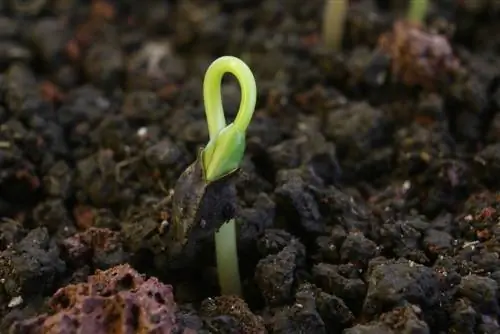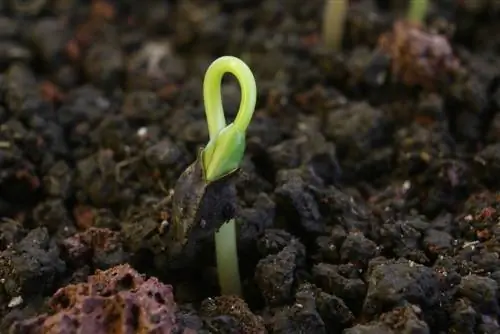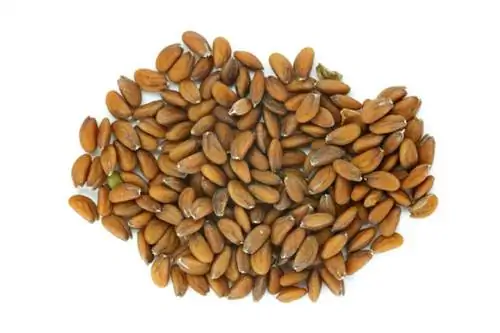- Author admin [email protected].
- Public 2023-12-16 16:46.
- Last modified 2025-06-01 06:02.
Buckwheat (bot. Fagopyrum esculentum) is not a cereal, but rather a so-called pseudo-cereal. Although the grain is often processed and used in a similar way to real grain, from a botanical point of view the plant belongs to the knotweed family (bot. Polygonaceae). Buckwheat owes its name to its beechnut-shaped seeds and to its ingredients, which are very similar to those of wheat. However, unlike wheat, buckwheat is gluten-free. In this post you will learn how to sow buckwheat yourself.

How should buckwheat be sown correctly?
To sow buckwheat successfully, choose a time between mid-May and mid-June, a loose, nutrient-poor and slightly acidic soil, a sowing depth of 2-3 centimeters and a row spacing of 25 centimeters with 15 centimeters within the rows.
Basic instructions for sowing buckwheat
In order to achieve the richest possible harvest, several basic aspects must be taken into account when sowing buckwheat. These refer to
- the time,
- the floor,
- the seeding depth and
- the row spacing.
Sowing buckwheat - the right time
Buckwheat is extremely sensitive to frost. For this reason, you should ideally only sow it after the Ice Saints. The right time for sowing is mid-May to mid-June. If you would like to use buckwheat as green manure, you can easily sow it until the beginning of August.
The growing season is only around 14 to 18 weeks - that's why we advise you to sow your buckwheat in June when the soil is consistently above 15 degrees Celsius. Always remember: At temperatures below five degrees Celsius, the annual plant dies!
Sowing buckwheat - the right soil
The soil must also be right for the successful cultivation of buckwheat. It should be low in nutrients, loose and too acidic rather than too alkaline.
Sowing buckwheat - the optimal sowing depth
The optimal sowing depth is two to three centimeters.
Sowing buckwheat - the ideal row spacing
A row spacing of around 25 centimeters is ideal. The distance within a row should be approximately 15 centimeters. You can also increase the density of green manure if necessary.
Sowing buckwheat - short instructions
- Spread the seeds outdoors (see row spacing).
- Rake the seeds lightly (see sowing depth).
- Keep the seeds moist at first; later you won't need to water them anymore (and you won't need to fertilize or use plant protection).
Practical: Buckwheat basically grows on its own - and extremely quickly. The seeds germinate in just seven days. But: Buckwheat can naturally only develop through insect fertilization. Unfortunately, the strong flower development makes this process a little more difficult. Not all flowers can be fertilized by bees.






